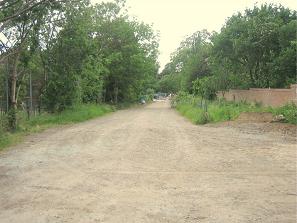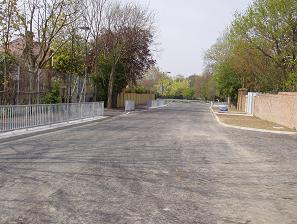Thames Water Ring Main Tunnel Extensions – AMP4 London Resilience Programme: 4DCF Brixton To Honor Oak |

75.8% |
Interim Client & Outline Design Award
Project Team:
Client: Thames Water Utilities Ltd
Design:
London
Clean Water Network (LCWN) and Mott MacDonald
 |
|
The Thames Water Ring Main (TWRM) was completed in 1994 and comprises a complete tunnelled ring around the major water supply zones within the Greater London area. Typically, the tunnel is located 40m below ground and transfers up to 1100MLD of potable water.
The AMP4 London Resilience Programme includes the requirement to construct two major tunnel extensions (4DCF and 6DCF) to the Ring Main. The tunnels are required to transfer up to 300MLD of potable water and will increase security of supply for areas to the North East and South East of London.
 |
|
During the early stages of the project, a decision was taken to register both projects for the CEEQUAL award scheme to ensure the highest standards of environmental good practice and design were achieved. The CEEQUAL award is divided into two stages that represent the key project milestones, namely;
- Stage 1: Interim Award Stage for satisfactory completion of planning and the outline design phase.
- Stage 2: Whole Project Award Stage for satisfactory completion of the construction phase.
The 4DCF Brixton to Honor Oak project has successfully completed the Interim Award stage and the Award was presented at a ceremony at the Institution of Civil Engineering on 11 July 2007.
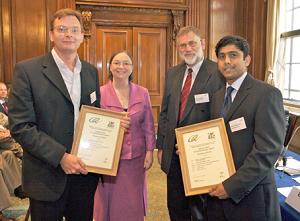 |
|
4DCF Brixton To Honor Oak
The southern tunnel extension from Brixton to Honor Oak comprises a 2.5m internal diameter, driven 4.8km from a new 55m deep shaft at Honor Oak Reservoir Site to a new reception shaft at Brixton Water Treatment Works. The tunnel will be constructed using pre-cast concrete segments and an earth pressure balance tunnel boring machine. Each site has its own engineering and environmental planning challenges. The Honor Oak Site is located on Metropolitan Open Land (MOL) and is used as a nine-hole golf course. The site is bounded by residential housing, a park, football club and a school. The Brixton site is on operational land similarly bounded by residential housing.
During the planning stages of the project, an Environmental Impact Assessment Screening Opinion Report was prepared, which stated that the project would not lead to any significant environmental impacts and therefore the main tunnelling works should proceed as Permitted Development.
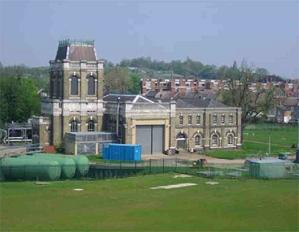 |
|
Works undertaken during the planning and outline design phase can significantly influence environmental impacts during the construction phase. By highlighting key environmental issues early and incorporating appropriate measures into the outline design, a better overall environmental performance will result.
Key actions undertaken by the Client-Design team during the Interim Award stage included:
- Reducing construction impact through careful consideration of locations for the tunnel drive and reception shaft site. The outline design removed the need to construct an intermediate access shaft.
- An Environmental Management Plan (EMP) was prepared, including an environmental risk register, identifying key risks and mitigation measures to be addressed by Thames Water and the contractor.
- A Tender Assessment Scoring method was used which gave consideration to the contractor’s environmental track record.
- Environmental screening surveys were carried out to identify likely environmental impacts (e.g. traffic, noise, groundwater, archaeology and habitat surveys).
- A Project Communication Plan for liaising with all key stakeholders was prepared. The key stakeholders comprised local authorities, residents and users of the golf club. Drop-in sessions were held at the main shaft site and the local residents were invited to hear about the project and raise any concerns, which were fed back to the project team.
- A firm of architects were appointed to design the site compound layout with a view to reducing the amount of MOL taken up whilst providing suitable access for operational requirements.
- A Landscape Plan was developed in collaboration with London Borough of Southwark’s Tree Officer to remove trees found to be in poor condition and plant new trees at the Honor Oak Reservoir site.
- Pre-Construction Enabling Works were designed and carried out to upgrade the main access to the Honor Oak Site. Upgrades included provision of a new pedestrian walkway and guardrail, recycling centre and widening of the unmade road.
|
|
|
Future Works – Construction Phase
Both 4DCF and 6DCF projects have been procured as Design & Build contracts, using the Engineering Construction Contract (ECC). The appointed tunnelling contractors are required to develop the detailed design and carry out the construction works. The construction works have the potential to create the largest environmental impact.
Typically, the key environmental impacts identified during the construction phase comprise:
- construction traffic nuisance to local residents
- compliance with Environmental legislations (Section 61 and EA approvals)
- detailed design of the tunnel-lining system
- recycling and/or disposal of tunnel arisings, primarily Thanet Sands, Chalk and London Clay via other project sites or aggregate/gravel pits.
- non-contamination of Source Protection Zones (SPZ)
With the first part of the journey complete, London Clean Water Network remain committed to working together with the Design & Build Contractor to ensure the high standards of environmental excellence are achieved.
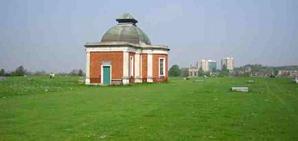 |
|

